Daylight vs. Soft White for Your Living Room
Author: Rick Worst | Editor: Omar Alonso
Review & Research: Jen Worst & Chris Miller
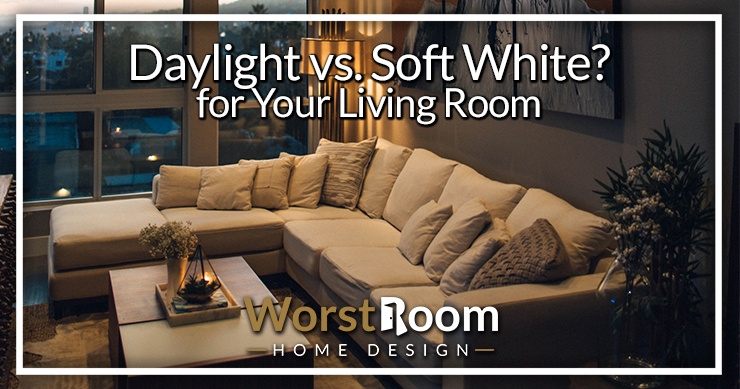
You’ve probably noticed that not all light bulbs give off the same hue. Some seem more orange, while others are almost blue. So how do you know what type of bulb works in what space? Particularly, should you opt for daylight vs. soft white for a living room?
If you’re struggling to pick the best bulbs and lighting scheme for your living room, keep reading to learn about the best light bulb color for a living room..
Light Temperature Explained
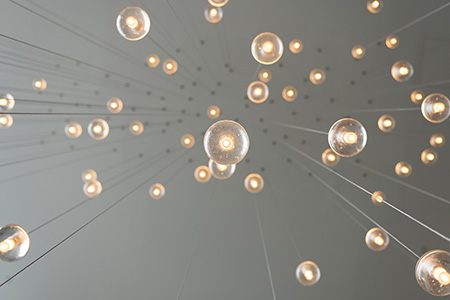
Light temperature is measured in degrees of Kelvin (K) and determines the color of the lighting. Soft white and daylight are the two most common light temperatures used in homes and decorating.
The lower the temperature of the light is, the cooler the light’s color will be, which may seem odd. So the hottest lights will take on a slightly blue hue and be whiter than cooler lights. Cooler lights offer a warm glow rather than striking white.
Lumens
While Kelvin (K) determines the color, lumens (LM) determine the brightness of a light. So two lights can have the same amount of lumens but be different colors, sometimes making one seem brighter than the other.
When designing a lighting scheme and shopping for living room lights, consider the brightness of the bulbs you look at. You may want daylight lighting but be deterred by a bulb that is too bright. On the other hand, soft white bulbs with low lumens may seem to dim.
Daylight Lighting
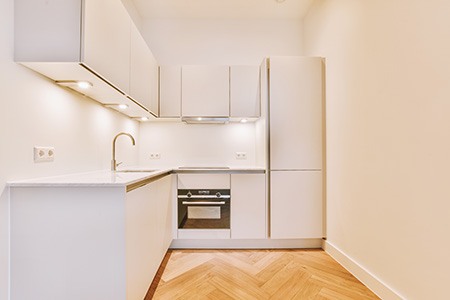
Kids draw the sun as a yellow ball in the sky, but natural sunlight has a slightly blue hue, just like daylight bulbs! So daylight bulbs have a cooler color that can illuminate a space and increase visibility. These bulbs are bright white and have little warmth compared to soft white lights.
Common uses for daylight bulbs include:
- Garages
- Kitchens
- Bathrooms
- Outdoors
- Entryways
- Basements
- Offices
Any room in which you’ll be active during the day (especially on overcast days) can benefit from daylight bulbs. Having soft white bulbs in smaller types of lamps on a sofa side table as an alternative for the evening is a nice luxury, too.
Benefits of Daylight Bulbs
Below are the benefits of using daylight types of light bulbs.
Energizing
Daylight bulbs can wake you up and give you more energy, making them ideal for bathrooms and kitchens where people start their day. Bulbs with a warm, golden glow can make you feel too relaxed, causing you to be sleepy. But daylight bulbs are excellent for keeping you awake and helping you feel more energized.
Mimics Real Sunlight Better for Productivity
Commercial offices have daylight bulbs because they increase productivity and keep people focused. The bright white light can boost brain activity and mental awareness, so you can get work done faster and more accurately.
Ideal for Visibility
Bright white light from daylight bulbs makes it easier to see things, especially in overhead types of light fixtures. Trying to shave a beard or write a check in warm, dim lighting causes you to strain your eyes. Daylight bulbs are ideal for spaces where you need to focus on small tasks.
Drawbacks of Daylight Bulbs
Daylight bulbs also have drawbacks worth mentioning.
Harsh On Eyes
Daylight bulbs are usually super bright, so they can be harsh on your eyes. Spending too much time surrounded by these bright lights can affect night vision and cause your eyes to be dry and sore. It can also negatively affect your sleep.
Soft White Lighting
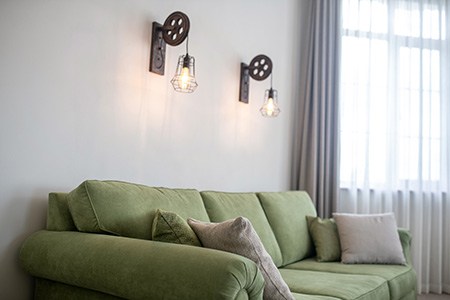
Despite the misleading name, soft white bulbs have a gentle yellow or orange glow. Think about how the sun in the middle of the day illuminates everything superbly, but the sunlight at dusk or dawn has a golden glow and is dimmer. Soft white lights are similar to the golden aura of dusk and dawn.
Common uses for soft white bulbs include:
- Bedrooms
- Dining rooms
- Hallways
- Studies
Rooms where you relax or want to set a calmer atmosphere, especially in the evening, should have soft white bulbs. Hallways are a great place for them so those who get up in the night can see where they’re walking without disrupting people in the surrounding bedrooms.
Benefits of Soft White Bulbs
Check out the benefits of choosing soft white bulbs for your living room, especially in various types of floor lamps and side table lamps.
Easy on Eyes
The warm bulbs are much more gentle on your eyes, creating a more conducive environment for resting. Soft white bulbs are better for your eyes and lead to better REM sleep.
Warm & Cozy
The warm glow of soft white lighting is more inviting and cozy than the brightness of daylight bulbs. If you want to curate a homey environment in your living room, soft white bulbs are ideal.
More Sustainable
Because soft white lights produce less heat, they won’t change the temperature in your home, forcing your HVAC system to expend more energy. They're also safer to handle and less likely to burn your fingers. If you care about keeping your home sustainable, soft white lights are the better choice.
Relaxing Atmosphere
The warm lights create a soothing environment when settling down for a movie or a nap. Relaxing and shutting your brain off when surrounded by super bright lights is challenging. This is the core reason for choosing soft white vs. daylight bulbs for a living room.
Drawbacks of Soft White Bulbs
Below are the drawbacks of soft white bulbs.
Usually Dimmer
For some, the warm glow of these lights isn’t enough to illuminate their space. It can be frustrating when the dimness creates visibility issues, making certain activities difficult. For example, if you love to play board games or do crossword puzzles in your living room, a dim, soft white bulb may force you to strain your eyes.
Factors to Consider When Choosing Your Lighting Color
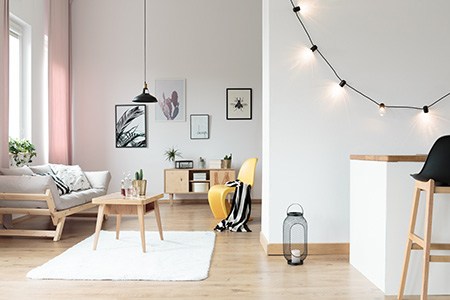
At the end of this article will be a recommendation for the best lighting for living rooms, but not every home is the same, and not everyone has the same preferences and goals for their living room. Consider the following factors when deciding what light temperature is ideal for your living room. When it comes to daylight vs. soft white for your living room, consider the following...
Living Room Habits
One of the top factors to consider when selecting light temperature is what you use the room for. Kitchens and bathrooms work better with daylight bulbs, giving you better visibility whether you’re cooking dinner or doing your makeup.
Entryways, garages, and basements often have daylight bulbs for safety, as these spaces can be dark and hazardous. But most people use their living room as a place to unwind and find some peace. Soft white lighting is usually the better option if you want to curate a relaxing and calm space in your living room.
However, some people use their living for more functional purposes. For example, an Etsy shop owner may use their living room as a crafting spot or space to organize products. In these situations, soft white lighting may be a better option. Studies show that brighter, cooler lighting can increase productivity and focus.
Desired Mood
Most people have a mood in mind when they design a room, so what vibe do you envision for your living room? You can curate an energized aura by using daylight. This is like the debate between curtains or blinds in your living room. Well, what mood and aesthetic do you want to establish?
If you like a sunny, bright space, you can mimic natural sunlight with the bright white lights of soft white bulbs. But it’s more common for people to want a peaceful and serene mood in their living room. Consider what mood you want to achieve and use that to determine the best lighting color.
Natural Lighting
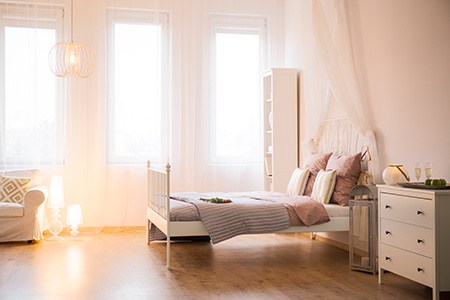
Many studies show that bright lights can impact someone’s mood and energy levels. There are even disorders where people grow depressed from a lack of sunlight. While the warm glow of soft white lights may seem more charming and cozy, they don’t offer the same burst of energy you get from natural sunlight.
However, daylight bulbs come closer to natural sunlight, which can help life people's moods and create a more positive environment. If your living room receives plenty of natural light, you likely do not need the energy soft white lighting brings.
Room Size
Lighting can create illusions, making a room feel bigger or smaller than it is. The brightness of daylight bulbs can illuminate sharp edges and surfaces in your living room, making it seem bigger. However, if your living room is already large, daylight bulbs can make it feel too big, creating an empty feeling.
But the warmth from soft white bulbs can refine a large space, making it feel more cozy and homey. On the other hand, a small area can feel roomier with daylight bulbs and smaller with soft white bulbs.
So, What Color Light Is Best for a Living Room?
What color light is best for a living room? In the end, most designers recommend using soft white bulbs in your living room because they create a relaxing and warm atmosphere. But consider the factors explained above before making a decision.
Not everyone uses their living room for the same activities, and people have different tastes, so you must make the best decision for your particular home and style. You can always one color light in the overhead light fixtures and the other color in your lamps.
If I had to choose one color of light bulb when it comes down to daylight vs. soft white for a living room, I'd recommend daylight. But again, both is always a better answer so you have options.



